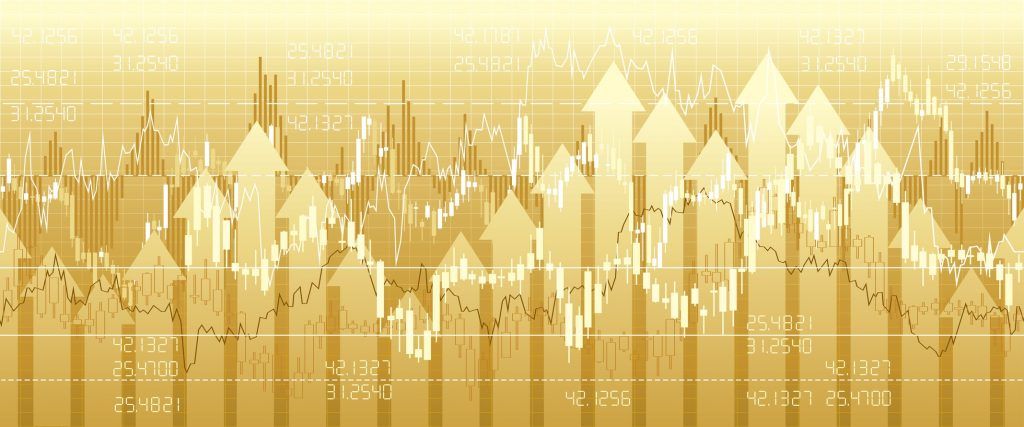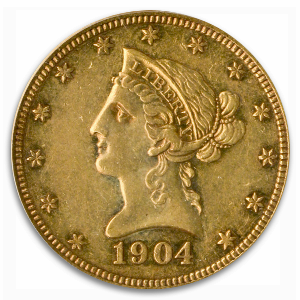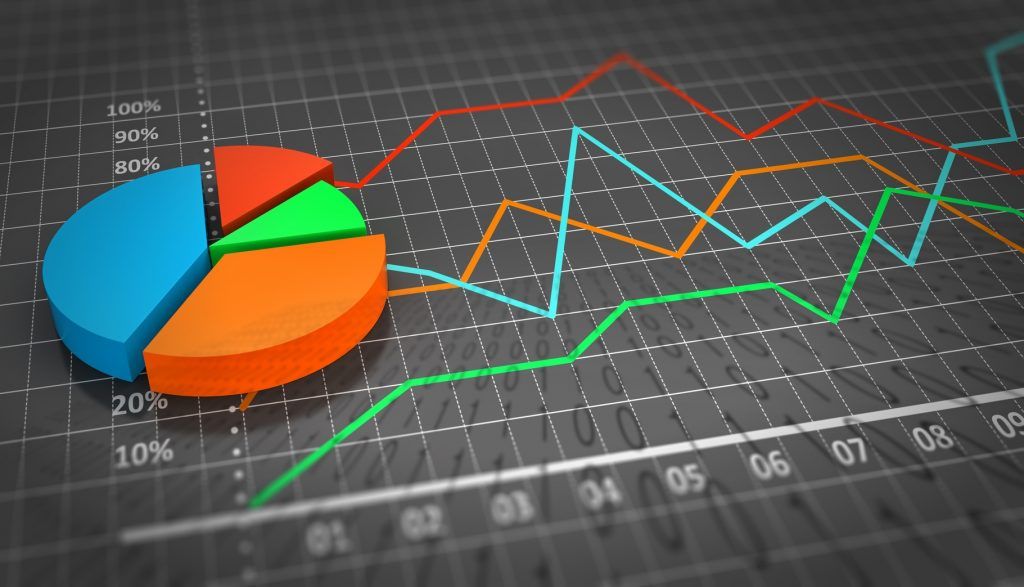Red Dogs, Smooth Monkeys, and Stump Tails
Posted onImagine if the U.S. were to witness its paper currency plummet to just 4% of its face value. Then, imagine the ruling powers were to decisively withdrawal all government deposits from its central banks. Finally, imagine we start to produce 45% of the world’s gold supply. Now, imagine that all those things have already happened. Welcome to the turbulent early days of gold.

Divisiveness and debate were at home in America during the nineteenth century as much as they are today. Only in that time one of the major topics was determining how to handle the issue of money. That is, the founding fathers had to determine how currency would work in this burgeoning land.
Many people detested paper money and considered gold, as many do today, as the only real, dependable form of payment. However, the U.S. was taking shape and if economic growth were to be sustained how would gold scale? Citizens would have to mine it and track it and all at a speed that kept pace with the rapid population growth occurring across the land.
Therefore, states issued their own paper currency. These predecessors to the money we use today carried names like “red dogs,” “smooth monkeys,” and “stump tails,” as researcher and historian James Ledbetter explains in his latest book. However, despite the necessity of this system leaders like Thomas Jefferson warned that “bank notes will be as oak leaves.” He, like others feared rampant inflation.
Meanwhile, a uniform paper currency still eluded the country. In isolated cases Jefferson’s fears came to fruition as Rhode Island banknotes sank to just 4% of their face value from 1730 to 1750. This outcome was not uncommon. Ledbetter offers an anecdote from a man who saw a one-dollar note diminish to nothing in the span of traveling just one hundred yards. The reason: across state lines various currencies held different sway.
However, the gold rush sparked renewed fervor around precious metals as production peaked in approximately 1852. The onslaught of ordinary miners seeking wealth came fast. But deposits were soon depleted and any remaining gold required heavy, expensive machinery to be unearthed.
Today, gold remains as captivating to Americans and investors across the world. As of the end of the first quarter of this year bar and coin demand increased by 9% YoY. Interestingly, this growth is due, in part, to a resurgence in interest among banks which are “increasingly looking to develop their gold businesses to offer a compelling proposition to investors,” according to The World Gold Council.
Moreover, this trend has international appeal. In the last quarter of 2016 the Bank of China started offering investors an interest-bearing gold instrument. Other inventions like “Microgold” offer investors a physical-backed product which makes purchasing the precious metal easier. This development represents a drive to bring a new generation into the world of gold investing through more accessible digital means.
Gold was never abundant enough to support the breakneck speed of America’s development. However, this very fact forms the basis of its appeal today; its rarity underpins its effectiveness as a universal, global currency. “Stump tails” change but gold is here to stay.
What happens when a country abandons 86% of their circulated currency?
Posted onIn early November of 2016 the Indian government declared that they would no longer accept 1,000 and 500 denomination notes. The move was intended to counteract the “shadow economy” while slowing the efforts of counterfeiters. Citizens were instructed to return all paper currency of these values to their local bank. Estimates put this total at 15.44 trillion equaling 86% of the county’s currency sending shock waves through their economic system.

The first major indicator of trouble following the government’s decision was a plummet in the Purchasing Managers Index, or PMI. The figure dropped to its lowest level on record. This free fall indicated that the health of the manufacturing sector was failing. The factors considered in the PMI calculation include new orders, inventory levels, production, supplier deliveries and employment. Motorcycle sales also dropped. While this may sound inconsequential the trend represents “a good measure of the health of India’s cash reliant rural economy,” according to Allistair Hewitt, Director of Market Intelligence at The World Gold Council. Those sales fell to their lowest level in six years.
In recent months, however, the economy in India has improved. Both the PMI and motorcycle sales have inched closer to previous levels giving citizens reason to foster guarded optimism. Despite this gradual recovery though, the demonetization efforts have destabilized the faith many citizens once had in fiat currencies. This truth is evidenced by research from The World Gold Council conducted in the first quarter of 2016. The study found that a substantial 63% of Indian residents agreed with the statement, “I trust gold more than the currencies of countries.” Moreover, nearly three quarters of the respondents agreed with the statement, “Gold makes me feel secure for the long-term.”
Buying behavior in the weeks preceding and following the demonetization efforts support these findings. ‘People frantically bought gold bars and jewelry till late midnight,” remarked one jeweler in the country according to The Hindu. The renewed fervor surrounding gold may have global implications. Reports from Business Insider indicate that India and China together make up 50% of global consumption.
India’s economy amid this upheaval serves as an example of how gold is inherently different from paper currency. When people become skeptical of a country’s economic health they turn to the only currency that’s accepted worldwide. The precious metal is not supported by faith in an economy or government. Rather, scarcity and global demand underpin the value of gold.
This reinvigorated interest in gold underscores the difference between things with intrinsic value and those without it. Fiat money (paper money) carries the risk of devaluation, or even becoming worthless, in the event of hyperinflation. By its nature fiat money is unlimited, the government can always print more. This leaves it susceptible to bubbles. Meanwhile, gold, with its limited supply, offers investors an alternative.
“Fiat” is Latin for “it shall be.” However, in darker periods of history people have learned that “shall” never came.
Welcome to the counterparty, pal!
Posted onRemember that social studies project from middle school? The teacher split the class into groups. You landed in a team of slackers, nobody did their part. In the end, you were left holding the bag as the project started to crumble. This was the first time you experienced counterparty risk.

Nearly all financial instruments carry counterparty risk. When you engage in a contract with another group (“party”) you always face the risk of the other side failing to meet their obligations. Stocks, bonds, derivatives and options all carry this risk because there is always a chance that the other side will default. In such a scenario a company may file for bankruptcy.
There is a spectrum to risk. Investors can rely on various ratings and figures to help them gauge where an investment falls on this scale. However, even this system can breakdown. The most recent and painful example was the 2008 financial crisis. Well-respected rating agencies like Moody’s, Fitch and S&P all gave the highest possible rating (AAA) to mortgage-backed securities made up of subprime loans. These wildly optimistic ratings were not just a failure of the agency’s rating models. In many cases bond issuers paid the agencies. Some have highlighted this practice as an example of collusion. Investors, misled by these ratings, lost billions.
So, where is the market today?
Some believe today’s stock market is characterized by heightened counterparty risk given the outsized valuations amid constantly rising stock prices. Recently, The World Bank showed that the total U.S. stock market is valued at 150% of annual gross domestic product. This figure is far north of the historical measurement. Moreover, the figure bears an uncomfortable resemblance to the state of the market in 2000 prior to a sharp drop in values. What does an investor do? Where do they go?
Gold offers a rare departure from this inherent problem in investing because it carries no counterparty risk. When you own the physical asset of a rare, precious metal, you own something that isn’t in the hands of rating agencies. There is no threat of unscrupulous CEOs or backroom dealings that leave the investor out in the cold.
As we’ve discussed before, it’s important for investors to remember that counterparty risk does not go away when you own gold ETFs. “Physical gold is a tangible asset. Paper gold is a financial instrument,” astutely remarks Business Insider. They continue, “You must rely on another party – known to you or not- to make good on the investment. With a gold ETF, you are dependent upon, among other things, management prowess, fund structure, chain of custody, operational integrity, regulatory oversight and delivery protocols.” That’s a long list for an investor seeking a haven investment.
If there’s one party you want to skip once and awhile it’s the counterparty.
Some measured exposure to counterparty risk is an acceptable characteristic of a diverse portfolio. However, all investors need to ask themselves if they’re comfortable with all of their holdings being subject to this darker side of the market.
Can the Stock Market Ever Go Down?
Posted onAlthough all three benchmark US stock indices retreated minimally on Friday, last week was another record setting week for the markets. Since July 7th, Emini Nasdaq 100 futures did not have a single down day, until Friday. Along with the Emini S&P 500 futures, this marked an awe-inspiring consecutive 10-day winning streak for the two index futures.

According to data from FactSet, this impressive day-after-day market climb hasn’t happened since February 24th, 2015. Thursday marked the Nasdaq’s 41st record high of 2017. The Nasdaq made a fresh new all-time high at $5,932.61 and the S&P 500 went into uncharted territory to print as high as $2,477.62.
Analysts attributed Friday’s very minor decline to profit taking. Stocks have had an incredible run and have broken more records this year than in the past decade, so minor declines seemed appropriate at some point. All three market indices closed well within 1% of their respective records on Friday.
Referring to the minor sell-off on Friday, Bruce Bittles, the chief investment strategist at RW Baird & Co., noted how “we had a nice build up in the market with the S&P 500 hitting a record and the market typically does not go up in a straight line.” Or does it? Stocks didn’t exactly crash down on Friday. Compared to the amount of gains in the market last week, Friday’s decline is a drop in the bucket.
“When you see 10 straight days of gains, you can expect a little pullback in the short term, but the breadth we saw in the Nasdaq over the rally speaks very well for what can happen down the road,” said Wayne Kaufman, chief market analyst at Phoenix Financial Services.
Much of last week’s market gains were driven by upbeat earnings reports, positive economic data, and weakness in the US dollar.
Technology giants Microsoft and Apple, trading under ticker symbols, MSFT and AAPL, respectively, contributed to much of the Nasdaq and S&P 10-day winning streak. Microsoft hit a new all-time of high $74.30 on Thursday when it released earnings showing larger than expected cloud computing demand. Most of the gains were given up on Friday, however.
On the currency front, continuing weakness in the US dollar was not only a boon for US stocks, because they became cheaper for foreign buyers, but the weak dollar also helped everyone’s favorite precious metal – gold.
Gold logged its highest settlement in over a month as it rose $9.40 to settle at $1,254.90 per ounce on Friday. This is the highest settlement for the yellow metal since June 23rd. When included with last week’s rally of 1.5%, this is an impressive winning streak for gold. Besides the weakening dollar and the possibility of a slower than expected rate hike schedule, lingering political uncertainty in the Trump administration helped gold settle higher as well.
What the market has in store for the rest of this week is anyone’s guess. After making new all-time high after all-time high, will it ever stop? The answer is unknown, but what doesn’t seem to be changing anytime soon is the fundamental thesis to own best precious metal in the world.
Since 1975, Blanchard has successfully helped over 450,000 clients invest wisely in precious metals and rare coins. As always, our team of experts are here to help you make the right decisions and capitalize on opportunities in the precious metals market.
Call us today at 800-880-4653
What Are the “Deep Fundamentals?”
Posted onWriter and futurist Alvin Toffler once described the people of America as a group that will “question if they will ever receive the pensions for which they have worked.” He examined the causes of these concerns which include surging health care costs and ineffectual politicians. “How, everyone wants to know, will this seemingly chaos affect our wallets? Will we even have wallets?”

Toffler wrote these words over a decade ago, however, they remain resonant today because the problems are inherent to our economy. Toffler argues many citizens suffering at the behest of monolithic enterprises. Moreover, consumers are increasingly feeding fuel to the fire. He introduces the word “prosumer” to describe the phenomenon of Americans consuming the very material they create. This material is often user-generated online content. “The dramatic effect of this shift from tangible to intangible inputs and outputs can be seen as investors buy up billions of dollars’ worth of shares of companies whose products are ‘untouchable.’”
Toffler’s foresight was impressive. The whispers of this future have given rise to a discordant cacophony upending conventional interpretations of or economic system. In his book Revolutionary Wealth, Toffler suggests that understanding this change requires not a review of the fundamentals but rather an exploration of the “deep fundamentals.”
“Today’s entire structure of wealth creation is quaking and rocking, suggesting even bigger changes to come.” Today, we’re seeing this prediction unfold as the concept of a prosumer economy pervades the financial world. However, Toffler, if alive today, might be surprised to discover that this change is not all bad.
Consider the recent news that Intercontinental Exchange Inc. (ICE) will assume the critical responsibility of supervising a key measure of silver prices. The organization will run daily electronic auctions that determine the London Bullion Market Association Silver price. This move represents the continuation of a trend which seeks to diffuse the responsibility of precious metal price calculation across millions of transactions. Before ICE, some gold and silver prices were determined by only a small cohort of banks. Why did this practice end?
As Toffler astutely noted, there were unseen, deep fundamentals at work. Those deep fundamentals were a sustained practice of rigging precious metal markets. “Deutsche Bank AG, UBS Group AG and half a dozen other financial institutions have collectively paid billions of dollars over allegations that they manipulated Libor or related interest-rate benchmarks. Deutsche Bank and UBS both entered guilty pleas over their roles,” explained a journalist writing for the Dow Jones.
By leaving these price calculations to the masses, via electronic exchange, we have a more accurate, more fair market at work. While it’s true that companies like Facebook and YouTube continue to profit from unpaid labor, the democratization of precious metal pricing with the advent of ICE is a welcome change from the consortium of guilty banks.
Toffler warned of the problems that occur amid “a mismatch between the demands of the fast-growing new economy and the inertial institutional structure of the old society.” However, as a society we’re discover how we can match this breakneck speed as we aggregate the resources of the public with the very technology that drives Toffler’s “fast-growing new economy.”
Measuring the Value of Your Rare Coins
Posted onWhether you are just getting starting collecting rare coins or you are a seasoned numismatist, it’s important to understand how to measure the value of your rare coins.

There is a marketplace for rare coins that is driven by supply and demand. The good news for rare coin investors is that supply is limited. The United States Mint isn’t creating anymore Silver Peace dollars or Indian Head Gold Dollars!
The demand for your coins will be measured by a number of key features including:
- The coin’s condition
- It’s rarity or scarcity factor – which impacts collector’s demand for the coin.
- Demand for that coin.
- The value of the coin’s precious metals content.
Rare Coin Values In 2017
At the mid-year mark, the PCGS3000® Index, which includes 3000 rare coins has slid lower on the year. The index was recently valued at $57,920.49, down from its 12-month high at $62,559.94. This is a very broad index including a wide variety of coins.
For long-term perspective, the index began in January 1970 at $1,000 and climbed to its all-time high at $181,088.48 in May 1989. The long-term appreciation from 1970 to the present is significant.
Interestingly, the Key Dates and Rarities Index is also down off its 12-month high, but not by much! The 12-month high stands at $26,405.30, while the index recently stood at $25,284.47, only a marginal decline.
What does this reveal?
For coin investors, it pays to focus on quality and rarity.
Key date and rare coins are maintaining their value better than the broader rare coin market. Just like in real estate, where the mantra is location, location, location. The key consideration in coin investing is scarcity, scarcity, scarcity.
If you have $5,000 to invest in rare coins – it could be more prudent to invest in just one rare coin – the highest quality and rarity that you can find, as opposed to spreading that $5,000 out over a number of less rare coins.
Older U.S. coins, especially those minted prior to 1933, are the most popular and lucrative of all the rare coin categories for collectors to consider. The most sought after rare coins fall into 5 major categories:
- U.S. gold coins
- Morgan and Peace Silver Dollars
- Commemoratives
- 19th Century Type Coins
- 20th Century Type Coins
As you look to add to your rare coin investment, it pays to diversify – but in a smart fashion. According to the Professional Coin Grading Service (PCGS) and Numismatic Guaranty Corporation (NGC), coin issues with the fewest coins in existence are the scarcest. Scarcity creates ongoing demand and keeps coin values high regardless of economic conditions.
Is there a coin that you’ve always wanted to acquire, but haven’t been able to locate? Call us. We work with clients to locate specific coins and can help you on your journey.
Work with a trusted partner. Blanchard and Company, Inc. is the largest and most respected retailer of precious metals and American rare coins in the United States, serving more than 425,000 people with expert consultation and assistance in the acquisition of numismatic rarities and gold, silver and platinum bullion. Since 2005, Blanchard has had sales of $2.5 billion. Blanchard and its predecessor companies have called the New Orleans area home for more than 35 years.
How to Think Like a Gold Strategist (and Not a Researcher)
Posted onRecently, John Reade, the Chief Market Strategist and Head of Research at the World Gold Council offered interesting insights on how gold research differs from strategy. Reade clarified that researchers are simply using all available data to understand the current state of the market. Examples include an analysis of supply and demand, mining operations or an individual countries market share.

Strategist, however, take analysis and run with it. “A strategist tries to think about how these moving parts fit together and which elements will change going forward,” remarked Reade. A researcher is delving into the delicious steak dinner while the strategist is thinking about dessert.
The distinction is important because it underscores the inherent uncertainty behind market prognostication. Moreover, it elucidates the symbiosis between the two roles. Research has little value without the ability to synthesize the findings. At the same time, a strategist is only as good as their basis of research. Of course, more research is not necessarily the answer.
“What I look at now is quite different from what I looked at 20 years ago, and different again from 10 and five years ago,” Reade continues. To effectively leverage the power of research a strategist need to become adept at distilling what matters from the “static.” Author and statistician Nate Silver explored this topic in depth with his New York Times best-selling book The Signal and the Noise.
In his book Silver takes issue with assumptions that rely too heavily on the clean, sterilized conditions of models that fail to factor for the differing levels of importance among the data used. That is, a strategist must understand what set of characteristics are more important among the group. Knowing where the signal lies reveals what data points can be safely muted. Yet, to find the needle you need the entire haystack. Therefore, greater historical data offers the promise of more needles.
Reade’s comments seem to echo Silver’s devotion to using a substantial set of measurements for isolating more accurate predictions. “This is another way in which strategy is different from research: the frequency of observations is higher, ideally in real time,” explains Reade. In following this practice, Reade outlines his data pools explaining that he looks at data from four key areas. Reade follows purchase levels, interest rates, macro-economic data and commodities like oil and even other precious metals.
Of course, while his process is enlightening, most of us simply want to know what the picture will be when all the puzzle pieces are together. After citing that long-term, real interest rates are low and that geopolitical risk is high Reade asserts that this “combined with concerns about the global economy will, in my view, likely see investors interested in gold.”
Being a good strategist starts with being a good researcher. Yet, a solid bank of data is only the beginning. The real trick is pulling what is germane to your question from the heap of otherwise unimportant, unintelligible “noise.”
Be a researcher first, then a strategist and finally an investor.
Markets Rip to New All-Time Highs
Posted onFor what has occurred dozens of times so far in 2017, the stock market made another all-time high last week. Emini S&P 500 futures traded as high as $2,461.25 on Friday, with Mini Dow Jones Industrial Average futures making a fresh high of $21,628.

Markets seemed to love Fed Chair Janet Yellen’s dovish testimony last week that interest rate hikes might actually come slower than previously anticipated. This is partially due to the Fed interpreting retail sales and consumer sentiment data that came in below analyst’s projections.
For last week, all three major indices closed largely higher, marking the second positive weekly close in a row. Although the Nasdaq 100 did not make a new all-time high last week, it has almost fully recovered from the infamous and mysterious tech sell-off a few weeks ago.
Interestingly enough, the financial sector was the only declining sector in the S&P 500 on Friday. Despite JP Morgan (JPM) reporting positive Q2 earnings-per-share of $182, well above the projected consensus of $1.59, bank stocks, as a whole, didn’t exactly rally on the bullish news. Other consumer banking giants, like Wells Fargo (WFC) and Citigroup (C), strangely declined on upbeat earnings.
The energy sector contributed to much of last week’s gains in the overall stock market, as crude oil futures for August delivery were up more than 5% for the week. Reports of a possible setback in Nigerian crude supplies coupled with a recent forecast from the US Energy Information Administration calling for higher oil demand in 2017 drove prices noticeably higher.
Meanwhile, gold prices settled at the highest level in a month as the possibility of future interest rate hikes dwindled due to the aforementioned softer-than-expected economic data. Gold futures for August delivery climbed as much as $10.70, or 0.88% on Friday and ultimately settled at $1,227.50 an ounce.
Suffice it to say that economic data ruled the markets last week, as gold, crude oil, and stocks were all positively influenced.
Much of the buzz last week on Wall Street seemed to be focused on the CEO of JP Morgan, Jamie Dimon, and his unusual and expletive diatribe regarding the lack of growth in America when compared to other countries. During the earnings conference call for JPM, Dimon stated his frustration for US economic growth policies as a whole.
“I was just in France. I was recently in Argentina. I was in Israel. I was in Ireland. We met with the Prime Minister of India and China. It’s amazing to me that every single one of those countries understands that practical policies that promote business and growth is good for the average citizens of those countries for jobs and wages,” Dimon said to analysts and investors on the conference call.
He noted how growth policies in the US are not a republican or democratic issue. Rather, he noted how infrastructure and regulatory reform are the key to providing the much needed jolt to the US economy that would likely spur more growth in the stock market.
Later on this week, there is a Bank of Japan announcement on Wednesday, a European Central Bank announcement on Thursday, and a smorgasbord of earnings announcements as earnings season is officially in full swing. Another banking giant, Bank of America (BAC), is reporting earnings later this week and the current at-the-money option straddle is anticipating price movement in the stock, up or down, of 3.4%. Similarly, Johnson & Johnson (JNJ) is priced for a 2.4% move up or down. Both stocks are large components in the S&P 500.
Blanchard has successfully helped over 450,000 clients invest wisely in precious metals and rare coins throughout all of the ups and downs in the market. As always, our team of experts are here to help you make the right decisions and capitalize on opportunities in the precious metals market. Call us today at 800-880-4653.
Future Shock, All Over Again
Posted onWriting in 1970, author Alvin Toffler remarked that “People of the future may suffer not from an absence of choice but from a paralyzing surfeit of it. They may turn out to be victims of that peculiarity super-industrial dilemma: overchoice.” His book became a modern classic. Future Shock warned readers of all the problems that occur when modernity outpaces our ability to adapt to changing times.

Now, decades later, his words ring true. The timelessness of gold has come head to head with the technological innovation of fintech solutions. This phenomenon has left some questioning how gold fits into the emerging world of digitized currencies like bitcoin.
Recently, The World Gold Council, released a report examining the future of gold amid the breakneck speed of blockchain technology. Interestingly, some experts believe that gold and the popular alternative bitcoin can happily coexist. “On 2nd March 2017, the price of BitCoin surpassed the price of an ounce of gold for the first time. For those who worry that gold has found a digital rival, it hasn’t – this is merely a nominal coincidence,” remarks The World Gold Council. They continue, “But gold also has an advantage – the market is deep (US$8 trillion) and it enjoys an unrivaled sense of security.”
This sentiment underpins an evolving perspective on gold. The emerging role of technology in our financial system only works to reaffirm the power of gold. It was the original form of universally accepted currency and still is. The authors of the piece from The World Gold Council remind readers that “Roughly US$250 billion changes hands each day through the gold market.” Moreover, the advent of technological developments may actually boost gold’s popularity.
Some have come to assert that people can leverage blockchain technology to hold a balance in true, tangible gold while still spending the asset. What’s more, this development would work to increase the liquidity of gold. With greater liquidity gold would become an even more agreeable way to invest cash and retain the value of one’s holdings. For these reasons experts are beginning to see the likelihood of a resurgence of gold increase.
Toffler was right about many things. However, the burden of choice may soon dissipate. Technology enthusiasts and gold holders just might have everything they want in one convenient choice.
Too often we assume that the new replaces the old. While, in some cases this is true, it’s far more common that the new reinvigorates the old. Or, as some have succinctly put it “everything new is old.”
Technology has found more efficient ways to put gold in the hands of investors. Meanwhile, unlike ETF solutions, new technology gives people a true claim to the asset rather than just a glorified promissory note. As this trend continues investors will see faster ways to make gold part of their holding all while knowing they can access it at any time and convert its growth into true spending power. As the authors explain, “In an indebted world, there are plenty of reasons why people should want to carry electronic gold in their pockets – and technology is allowing them to do so in a seamless way.”
Gold Tumbles to 4-Month Low on Strong Jobs Report
Posted onThe gold market took a dive last week, hitting a fresh four-month low following a stronger-than-expected U.S. jobs report. Gold touched a low at $1,207.00 per ounce.

The Labor Department said 222,000 new jobs were created in June, which beat economist’s expectations of a 174,000 gain. That follows strong labor reports in May and April and signals robust job growth.
The gold market has turned down since early June in a summer slide. That offers long-term investors a better entry purchase point. Short-term gold traders are exiting positions amid continuing signs the Federal Reserve will continue its plan to increase interest rates this year and next. Also, a lack of significant geopolitical turmoil or economic distress has removed some safe-haven demand from the gold market this summer.
While gold bears control the short-term trend, longer-term investors view the price dip as essentially offering up gold and silver “on sale.” The gold market is approaching a technical chart support zone at the $1,200.00/$1,190.00 area which could act as a hook to stabilize the market and act as an attractive entry point for investors with a long-term time horizon.
Gazing Into the Crystal Ball
Wall Street anticipates one more interest rate hike this year – at the December meeting.
The strong jobs report last week also gives the Federal Reserve an added kick toward beginning its balance sheet reduction, sooner rather than later. There are four upcoming Fed meetings in 2017.
Remaining 2017 FED Meetings
Date Market Expectations of Rate Hike*
July 25-26 3.1%
Sept 19-20** 18.4%
Oct 31-Nov 1 19.7%
Dec. 12-13* 50.6%
(* per CME FedWatch data tool, **meeting with a press conference)
$1400 Gold – All Bulled Up
Despite the modest Fed interest rate increases expected ahead, Wall Street firms remain bullish on the prospects for gold ahead. In a new research report published at the beginning of July, BofA Merrill Lynch Global Research forecasts gold at $1,400 an ounce in the first quarter 2018 and silver to rise to $20.71 per ounce in the same quarter.
“We believe markets are somewhat too complacent and investors should build positions in volatility-exposed instruments. Broadly, we believe that there are various alternatives to protect portfolios against increasing policy risk and a rapid reversal in investor positioning. Investors could opt to increase their gold allocations,” according to the BofA Merrill Lynch Global Research report.
The Bottom Line
Current levels in gold and silver offer long-term investors an attractive buying opportunity. Over the past 40 years, Blanchard has helped clients invest in American numismatic rarities and gold, silver, platinum, and palladium bullion. Contact us at 1-800- 880-4653.







